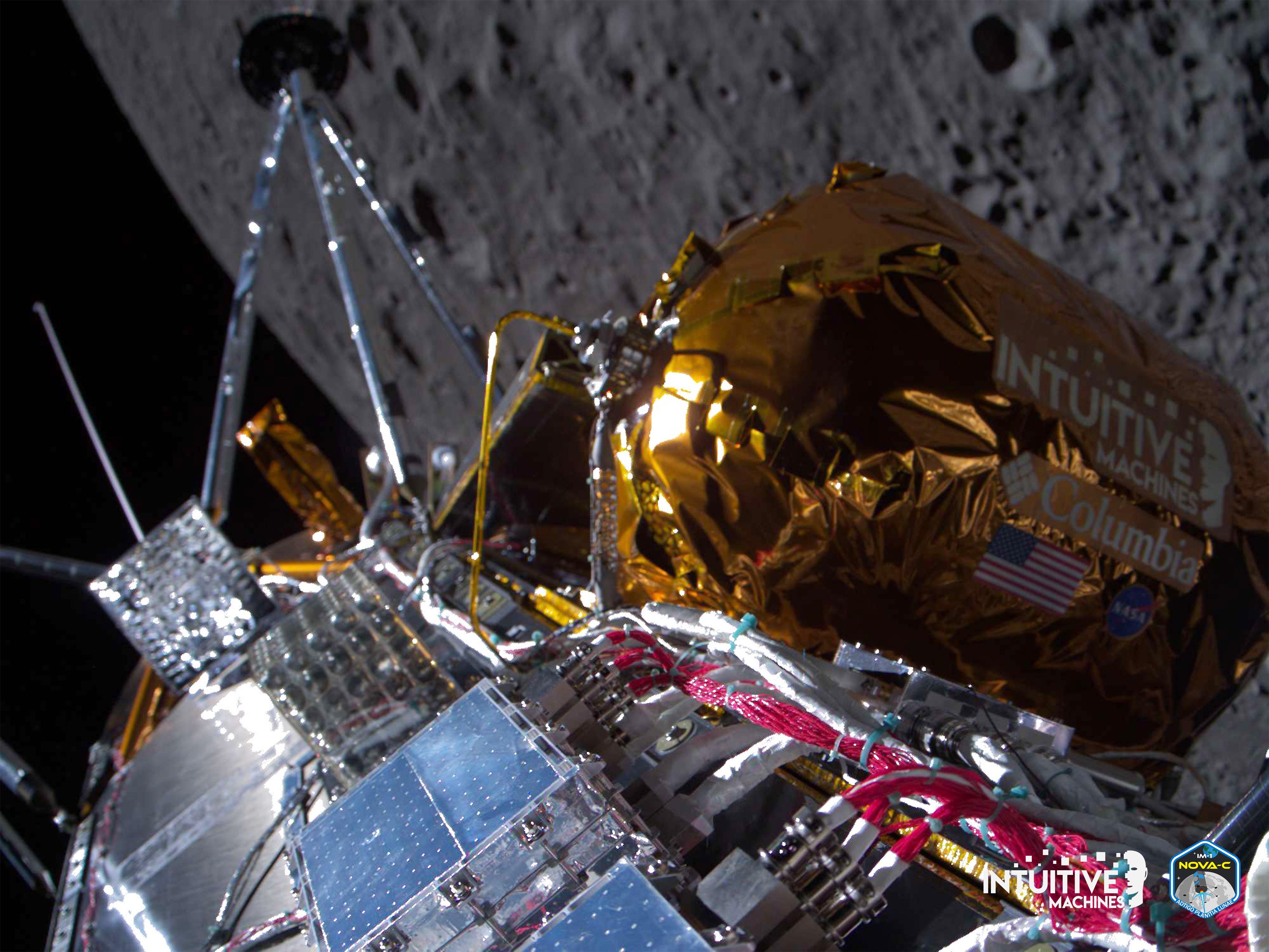
For the first time since 1972 a spacecraft launched from the U.S. has landed softly on the surface of the moon. And, for the first time ever, this successful extraterrestrial landing was achieved by a spacecraft built and operated by private industry rather than by a government space program.
At 6:23 P.M. EST a 14.1-foot-tall lander resembling a police booth on stilts descended to the moon’s surface on a ballooning blue flame of rocket exhaust. Seconds later, the lander’s six feet crunched into the dark soil of Malapert A, a crater nestled deep in the moon’s southern latitudes.
This robotic voyager, aptly nicknamed Odysseus, carries six scientific payloads on behalf of NASA. But crucially, the U.S. space agency isn’t running the mission: Odysseus is the first commercial spacecraft ever to land safely on another celestial body.
On supporting science journalism
If you’re enjoying this article, consider supporting our award-winning journalism by subscribing. By purchasing a subscription you are helping to ensure the future of impactful stories about the discoveries and ideas shaping our world today.
Odysseus was built and operated by Intuitive Machines, a private spaceflight company based in Houston, as part of the company’s IM-1 mission. In addition to NASA equipment, Odysseus carries payloads from private clients that range from a group of sculptures by artist Jeff Koons to a robotic “selfie” camera built by students at Embry-Riddle Aeronautical University.
And like its namesake from the ancient Greek epics, Odysseus faced trials as it sailed toward the lunar surface. Mere hours before landing, two onboard ranging lasers that Odysseus had planned to use to detect the moon’s surface broke. In response, Intuitive Machines improvised a software patch that let Odysseus commandeer two lasers onboard an experimental navigation payload built by NASA.
For more than 15 minutes after touchdown, Intuitive Machines’ mission control in Houston, Texas, waited in…
Read the full article here






